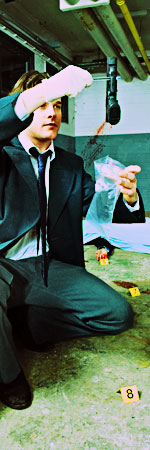Archival Notice
This is an archive page that is no longer being updated. It may contain outdated information and links may no longer function as originally intended.
Home | Glossary | Resources | Help | Contact Us | Course Map
Moving Cases Forward
Cold hits between two unsolved cases can provide additional information to the investigators about both cases, even though an individual's name is not available. It may allow the investigators to find a common suspect, or information from one case may refocus the investigation of the other.7
A hit between an unsolved case and a case that matched a suspect provides the name of the potential suspect for the unsolved case. The agency investigating the unsolved case can then expand the search to include that individual. After investigators are notified of a cold hit, a confirmation DNA sample must be acquired from the identified suspect. This sample can be obtained through consent, search warrant, or abandonment. It is important to include the prosecution at this step to discuss the most appropriate approach for sample collection.8,9
7 Connecticut
8 Criminal Histories of Sex Offenders Identified Through DNA "Cold Hits" PDF download: 48kB
9 Criminal Practice Report – Scientific Evidence, Methodologies for calculating significance of cold hit DNA match satisfied Frye, 20 No. 2 Crim. Prac. Rep. 7 (Jan. 2006) PDF download: 127kB
Additional Online Courses
- What Every First Responding Officer Should Know About DNA Evidence
- Collecting DNA Evidence at Property Crime Scenes
- DNA – A Prosecutor’s Practice Notebook
- Crime Scene and DNA Basics
- Laboratory Safety Programs
- DNA Amplification
- Population Genetics and Statistics
- Non-STR DNA Markers: SNPs, Y-STRs, LCN and mtDNA
- Firearms Examiner Training
- Forensic DNA Education for Law Enforcement Decisionmakers
- What Every Investigator and Evidence Technician Should Know About DNA Evidence
- Principles of Forensic DNA for Officers of the Court
- Law 101: Legal Guide for the Forensic Expert
- Laboratory Orientation and Testing of Body Fluids and Tissues
- DNA Extraction and Quantitation
- STR Data Analysis and Interpretation
- Communication Skills, Report Writing, and Courtroom Testimony
- Español for Law Enforcement
- Amplified DNA Product Separation for Forensic Analysts


